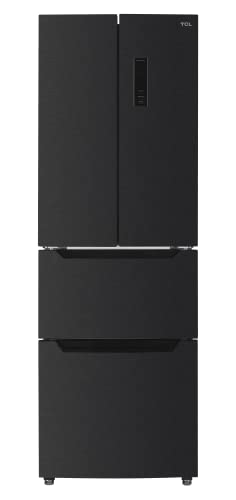The Comprehensive Guide to Refrigerators in the UK
Fridges are a necessary home appliance in every family, serving a vital function in food preservation and security. The UK market provides a diverse variety of fridge types, sizes, features, and brand names. This post intends to provide a thorough understanding of fridges readily available in the UK, including their functions, energy effectiveness, and factors to think about when purchasing.
Kinds Of Refrigerators Available in the UK
When looking for a refrigerator, it is important to understand the various types offered. Each type includes its own set of functions and functions, accommodating various requirements and choices. The most common kinds of refrigerators found in the UK consist of:
1. Top Freezer Refrigerators
- Description: The traditional style, including the freezer compartment on top.
- Pros: More economical, large, simple access to fresh food.
- Cons: Limited freezer space, the top may be less practical for bulk products.
2. Bottom Freezer Refrigerators
- Description: Freezer lies at the bottom, permitting easier access to fresh food.
- Pros: Greater convenience, much better visibility of fresh products.
- Cons: Usually more costly, some may struggle with big frozen products.
3. Side-by-Side Refrigerators
- Description: Features 2 vertical compartments, one for the fridge and one for the freezer.
- Pros: Ample storage area, easy to access both frozen and fresh foods.
- Cons: Wider footprint, they might not fit in smaller sized cooking areas.
4. French Door Refrigerators
- Description: Combines features of bottom freezers and side-by-sides, with 2 doors for the fridge on top.
- Pros: Stylish design, spacious, and often includes advanced features.
- Cons: Higher rate point, lines up inadequately with smaller sized cooking area designs.
5. Compact Refrigerators
- Description: Smaller models designed for limited areas.
- Pros: Ideal for small homes or workplaces, energy-efficient.
- Cons: Limited storage capacity, might lack functions.
6. Integrated Refrigerators
- Description: Designed to blend flawlessly with kitchen area cabinetry.
- Pros: Custom fit, aesthetic appeal, increases home value.
- Cons: Higher expense, may offer less flexibility in positioning.
7. Smart Refrigerators
- Description: Equipped with Wi-Fi and smart technology features.
- Pros: Advanced includes like touch screens and internal video cameras.
- Cons: Expensive, more complicated to fix.
| Refrigerator Type | Availability | Average Price Range | Energy Efficiency |
|---|---|---|---|
| Top Freezer | Moderate | ₤ 300 - ₤ 600 | Typical |
| Bottom Freezer | High | ₤ 400 - ₤ 800 | Above Average |
| Side-by-Side | Easy | ₤ 800 - ₤ 1500 | Differs |
| French Door | High | ₤ 800 - ₤ 2000 | High |
| Compact | Limited | ₤ 200 - ₤ 500 | Average |
| Integrated | Custom | ₤ 1000 - ₤ 2500 | High |
| Smart | Variable | ₤ 1200+ | High |
Secret Features to Consider
- Energy Efficiency: Look for designs that are energy-efficient. In the UK, appliances are rated from A (most efficient) to G (least efficient). An A+ ranking and above can lead to significant energy cost savings.
- Capability: Choose a fridge with adequate capacity for your household. A standard guideline is 100-200 liters per individual.
- Noise Level: Consider designs that run quietly, particularly if the kitchen is near living areas.
- Cooling Technology: Features like frost-free innovation are worth the investment, as they reduce maintenance.
- Adjustable Shelves: Having adjustable shelves improves the flexibility to store bigger items.
- Temperature Control: Check for user friendly temperature controls and zones for various kinds of food.
- Style: Choose the design and color that matches your cooking area visual, whether you prefer a modern-day stainless-steel appearance or a traditional retro surface.
Purchasing Tips
- Determine Your Needs: Consider your cooking practices, household size, and kitchen space.
- Set a Budget: Refrigerators been available in various price varieties. Develop a spending plan before you start going shopping.
- Research Study Energy Ratings: Invest in energy-efficient designs to save money on utility expenses.
- Read Reviews: User experiences can provide insights into reliability and performance.
- Compare Brands: Some brands are understood for their durability while others might provide more ingenious features.
Often Asked Questions (FAQs)
1. For how long do fridges typically last?
- Fridges typically last between 10 to 20 years, depending on the brand name and how well they are kept.
2. Exist Best Fridge Online for lengthening the life of a refrigerator?
- Routinely tidy the coils, examine the door seals, and regularly thaw if required to preserve optimal performance.
3. What is the very best size refrigerator for a family of four?
- For a family of 4, a refrigerator with a capability of around 400-600 liters is normally sufficient.
4. Do I need to stress over energy usage when purchasing a refrigerator?
- Yes, energy usage is essential. Search for systems with high energy performance rankings to decrease monthly costs.
5. Should I pick a fridge with a water and ice dispenser?
- This function can be convenient, specifically for families. However, it might need more upkeep than standard designs.
Acquiring a refrigerator is a significant decision for any family in the UK. With numerous types readily available, each with its unique functions and benefits, it is important to evaluate specific requirements before making an option. By considering factors such as energy effectiveness, capacity, and design aesthetics, customers can pick a fridge that lines up well with their way of life, eventually enhancing their kitchen area experience while securing food quality and freshness.

